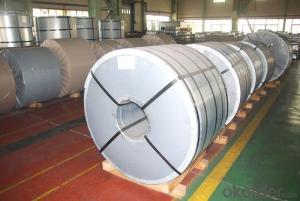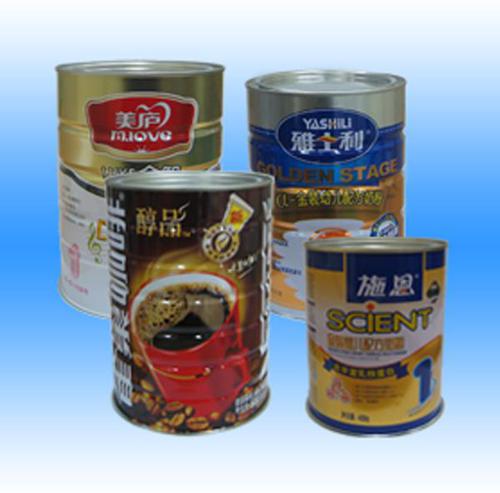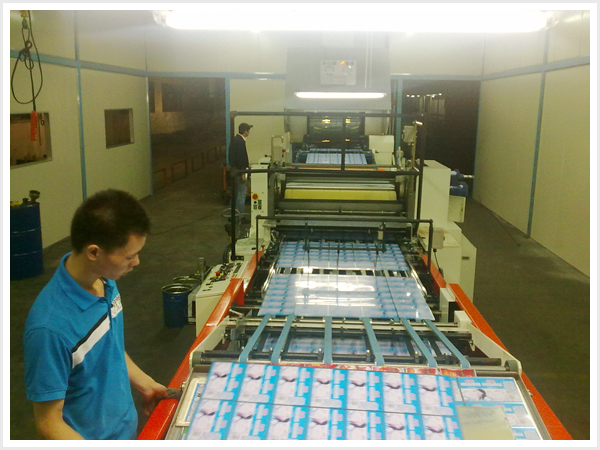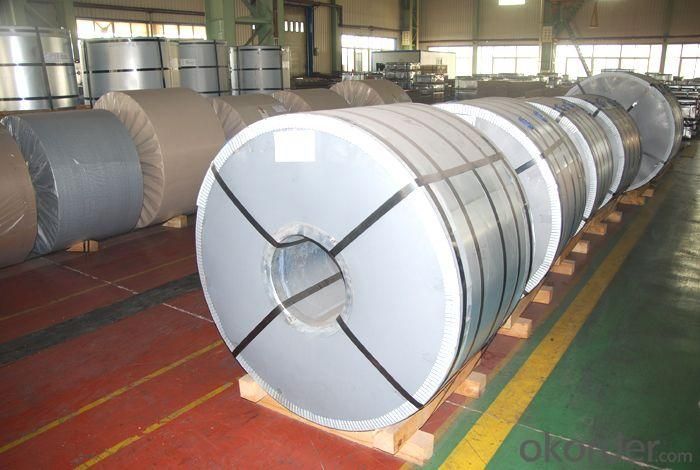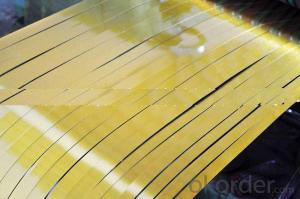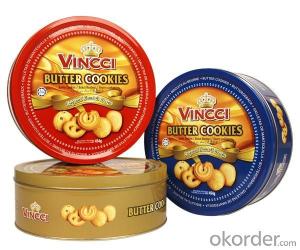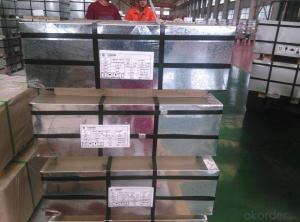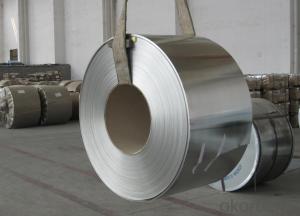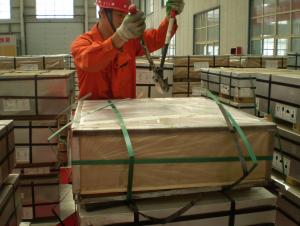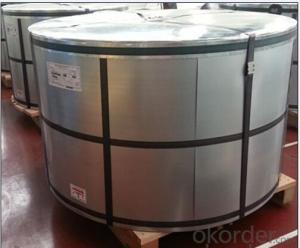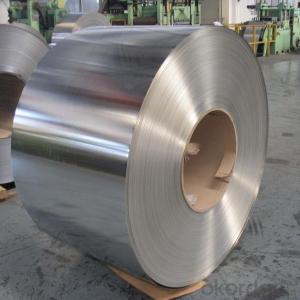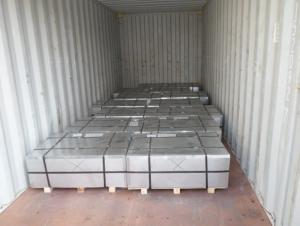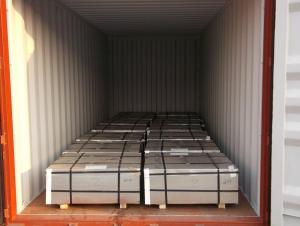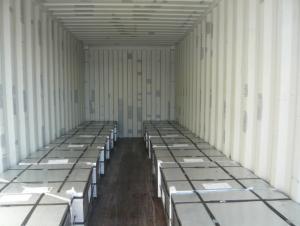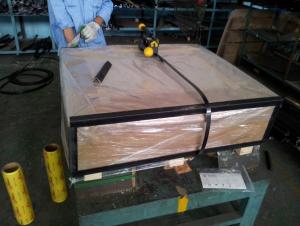Prtinted Tinplate For Milk Powder, EN 10202
- Loading Port:
- Tianjin
- Payment Terms:
- TT OR LC
- Min Order Qty:
- 25 m.t.
- Supply Capability:
- 10000 m.t./month
OKorder Service Pledge
OKorder Financial Service
You Might Also Like
1.Usage
Tinplate is widely used for making all types of containers, containing industrial usage such as paint can, oil can, aerosol cans etc., and food cans like milk powder cans, tomato paste can, dry food cans etc.
2. Quality
As a state owned company and a large tinplate supplier in China, our tinplate quality ranks 1st level in China, similar to Bao Steel, Posco etc.
3. Specification
standard: GB/T2520, JIS G3303, DIN EN10202
Material: MR /SPCC
Thickness available: 0.16-0.50MM
Width available: 600~1050MM
Temper grade: T1 – DR8
Tin coating: ordinary 2.8g/2.8g, 5.6g/5.6g and others
Package: sea worthy export package.
Applications: Tin can for chemicals & paint cans, industrial cans, food cans
4. Our factory photo & equipments

5. Our Markets:
now our tinplate has been sold to more than 50 countries, including Europe country, Gulf Area, South American, South Afric etc.
6. Our Overseas Wareouses:
Furthermore, in the year 2014, we have more than 10 overseas warehouses all over the word, located in KSA, UAE, Oman, Russia, Kuwait, Qatar, Oman, Chile, Brazil etc.
7. FAQ
a. what's the annual output?
about 500,000 tons per year.
b. where's the raw matrial from?
our hot rolled coil is purchased from Capital Steel and other state owned mill, with quite good quality.
c. how long is the delivery time?
normally for SPCC about 45~55 days, while 65~75 days for MR material
d. how to control the quality during production process?
inside our workshop, we have MES syestem. It realizes the optimization of the production procedure in the workshop. It could record each step of the whole production procedures, and if some problem appears, factory could easily found and take action, it’s quite helpful to monitor and control the quality.
- Q: What are the different types of tin coatings used on tinplate?
- There are primarily three types of tin coatings used on tinplate: electrolytic tinplate (ETP), tin-free steel (TFS), and black plate. ETP is the most common and consists of a thin layer of pure tin electroplated onto the steel substrate, providing excellent corrosion resistance and food compatibility. TFS, on the other hand, is a steel substrate coated with a layer of chromium oxide or chromium oxide and polymer, offering comparable properties to ETP but without the use of tin. Lastly, black plate refers to uncoated steel that can be further processed or coated as per specific requirements.
- Q: Can tinplate be used for frozen food packaging?
- Yes, tinplate can be used for frozen food packaging. Tinplate is a type of steel coated with a thin layer of tin, which provides excellent durability and corrosion resistance. These properties make it suitable for packaging frozen foods as it can effectively protect the food from moisture and oxygen, ensuring its quality and extending its shelf life. Additionally, tinplate is also recyclable, making it an environmentally friendly choice for frozen food packaging.
- Q: What are the cleaning agents suitable for tinplate?
- Some cleaning agents suitable for tinplate include mild dish soap, vinegar, and baking soda. It is important to avoid abrasive cleaners or harsh chemicals that can damage the tinplate's surface.
- Q: What are the main applications of tinplate in the stationery industry?
- Tinplate is commonly used in the stationery industry for various applications such as the production of pencil cases, pen holders, stationery boxes, and decorative containers. Its durability and resistance to corrosion make it an ideal material choice, ensuring the longevity of stationery products while providing an attractive and functional design. Additionally, tinplate can be easily customized with vibrant colors and intricate designs, enhancing the visual appeal of stationery items.
- Q: What are the common testing methods for tinplate?
- Common testing methods for tinplate include visual inspection for surface defects such as scratches or dents, measurement of thickness using a micrometer or caliper, evaluation of coating adherence through tape or cross-hatch adhesion tests, assessment of corrosion resistance via salt spray or humidity tests, and determination of mechanical properties like tensile strength or elongation through tension tests.
- Q: What's the advantage of metal containers in packing tea?
- Aluminum cans are exquisite. Well done! That's a relatively high cost.3: tin cans cost even higher. Tin can hold tea for hundreds of years. Firm, able to sculpt, and end as a work of art.
- Q: Can tinplate be used for outdoor signage?
- Yes, tinplate can be used for outdoor signage. It is a durable material that can withstand various weather conditions, making it suitable for outdoor use.
- Q: How does the printing process affect the durability of tinplate?
- The printing process can have both positive and negative effects on the durability of tinplate. On one hand, the application of a protective coating during the printing process can enhance the tinplate's resistance to corrosion, scratches, and other forms of damage. This can significantly improve its overall durability. On the other hand, if the printing process is not done properly or if low-quality inks or coatings are used, it can weaken the tinplate's protective layer, making it more prone to wear and tear. Therefore, the printing process plays a crucial role in determining the durability of tinplate.
- Q: What are the main challenges in tinplate supply chain management?
- The main challenges in tinplate supply chain management include ensuring a steady and reliable supply of tinplate, managing fluctuations in demand and supply, coordinating multiple stakeholders in the supply chain, optimizing transportation and logistics, ensuring product quality and compliance with regulations, and mitigating risks such as price volatility and disruptions in the supply chain.
- Q: What are the different ways to recycle tinplate closures?
- There are several different ways to recycle tinplate closures. One way is to take them to a recycling center where they can be melted down and reused to make new tinplate products. Another way is to repurpose them by using them for arts and crafts or other creative projects. Additionally, some companies offer take-back programs where you can return your tinplate closures to be recycled by the manufacturer.
Send your message to us
Prtinted Tinplate For Milk Powder, EN 10202
- Loading Port:
- Tianjin
- Payment Terms:
- TT OR LC
- Min Order Qty:
- 25 m.t.
- Supply Capability:
- 10000 m.t./month
OKorder Service Pledge
OKorder Financial Service
Similar products
Hot products
Hot Searches
Related keywords


